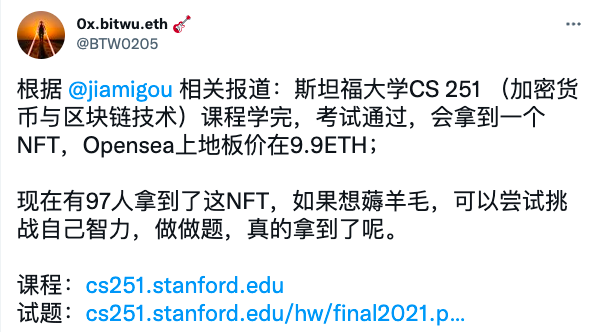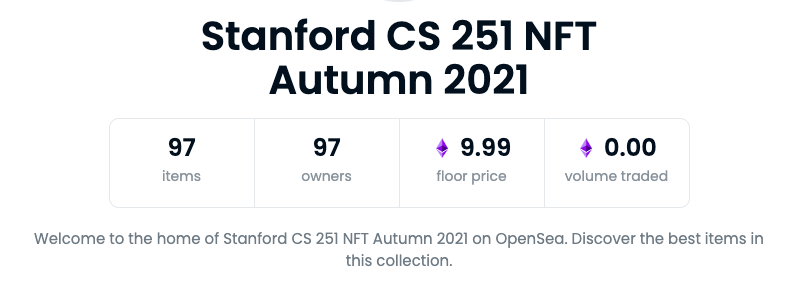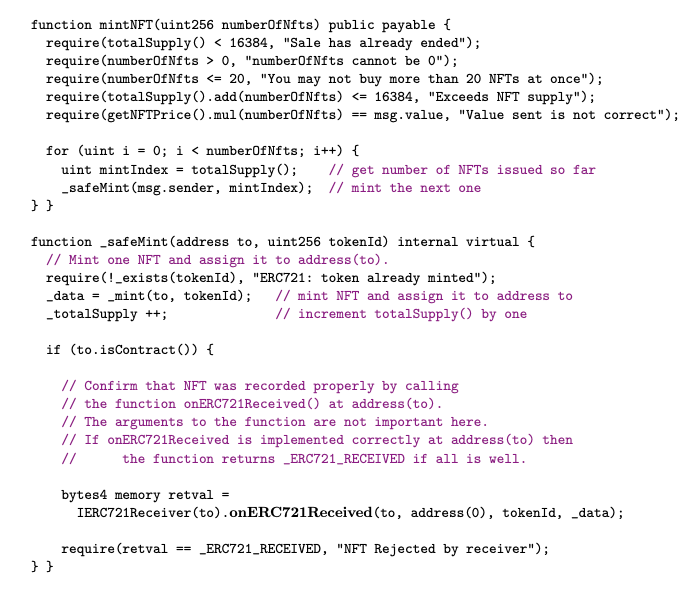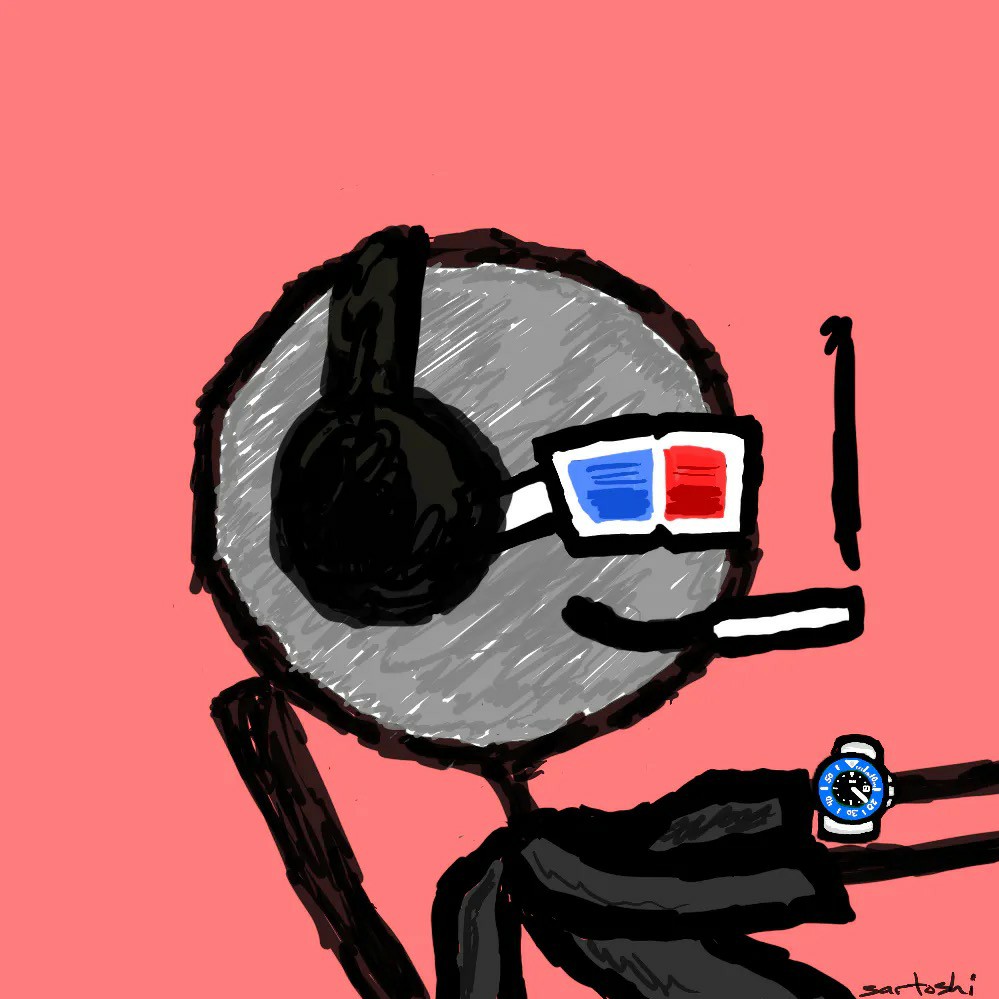Stanford's encryption exam, pass 9.9 ETH?
Today, an anecdote about Stanford University circulated in the "wool circle".

According to Twitter user @0x.bitwu.eth, if you can complete Stanford University's CS 251 (Cryptocurrency and Blockchain Technology) course and pass the exam, you can get a certificate NFT, which is currently at the floor price on OpenSea As high as 9.9 ETH, friends who are confident in their own intelligence may wish to give it a try.

According to Odaily's query, the full name of the certificate NFT is "Stanford CS 251 NFT Autumn 2021", and the distribution chain is Polygon. The current floor price in OpenSea is indeed 9.9 ETH, but there is no trading volume for the time being.
From the course homepage "https://cs251.stanford.edu/"It can be found on the website that this is a course offered by Stanford University last fall. The course content covers all aspects of blockchain and cryptocurrency, including distributed consensus, smart contracts, (token) economics, scalability and applications, with a focus on Bitcoin and Ethereum.

To complete the course, in addition to passing the final test questions, you also need to complete 3 assignments and 4 homework projects, including using python-bitcoinlib to perform Bitcoin transactions, building Ethereum payment applications, building AMM DEX, using SNARKs, etc. .
As for the test questions (pdf document:https://cs251.stanford.edu/hw/final2021.pdf), there are a total of six major questions, and each major question is subdivided into multiple small questions. The content of the questions covers theoretical explanation, market practice, bug repair, industry outlook and many other directions. for example:
Q1-A: Briefly explain why Rollup needs to store all transaction data on-chain? What can go wrong if transaction data is discarded and not stored anywhere?
Q3-D: In Uniswap V2, suppose Bob executes a large transaction (such as selling DAI for ETH) through the DAI/ETH pool, which makes the exchange price of assets in the pool deviate from the equilibrium point. Arbitrageur Alice finds this opportunity , and wants to initiate a reverse transaction, how does she need to implement an arbitrage strategy? Students need to come up with a method that would allow Alice's transaction to be executed as soon as Bob's transaction is confirmed.
Q4-C: Which line would you add or change in the Solidity code below to prevent the attack? Note that the requirement is that no more than 20 NFTs should be created in a single transaction.

Q5-C: How would Bitcoin be affected if someone discovered a way to forge ECDSA-signed arbitrary messages using only an ECDSA public key? Assume that forging a single signature takes 30 minutes of computation time and cannot be speeded up.
……
The requirement for this set of test questions is that any (non-human) resources can be used to assist in answering, but they cannot cooperate with others. Friends who are interested may wish to have a try and test their professional ability.But NFT should not be available. The reason for saying this is firstly because the OpenSea Description of this series of NFTs has clearly mentioned "non-tradable" (this is why there is currently no trading volume); secondly, because the distribution range of this set of NFTs is limited to CS 251 Students, access requires completion of the entire course in addition to passing the exam, and the final submission deadline for the exam was December 8 last year.
After the whole set of test questions, it can be seen that Stanford's teaching is highly consistent with the latest developments in the industry. Rollup, zk-SNARK, AMM, Hashmasks, Tornado cash... All questions are centered around the latest concepts and projects in the industry. This is also in stark contrast to the highly theoretical nature of courses such as the so-called "Blockchain Technology and Application" in some institutions of higher learning.
Not only the content of the assessment, but even the final credit award form coincidentally borrowed from the popular NFT in the circle (in fact, it is more like POAP), which shows Stanford's training level in cutting-edge technology and application fields.



